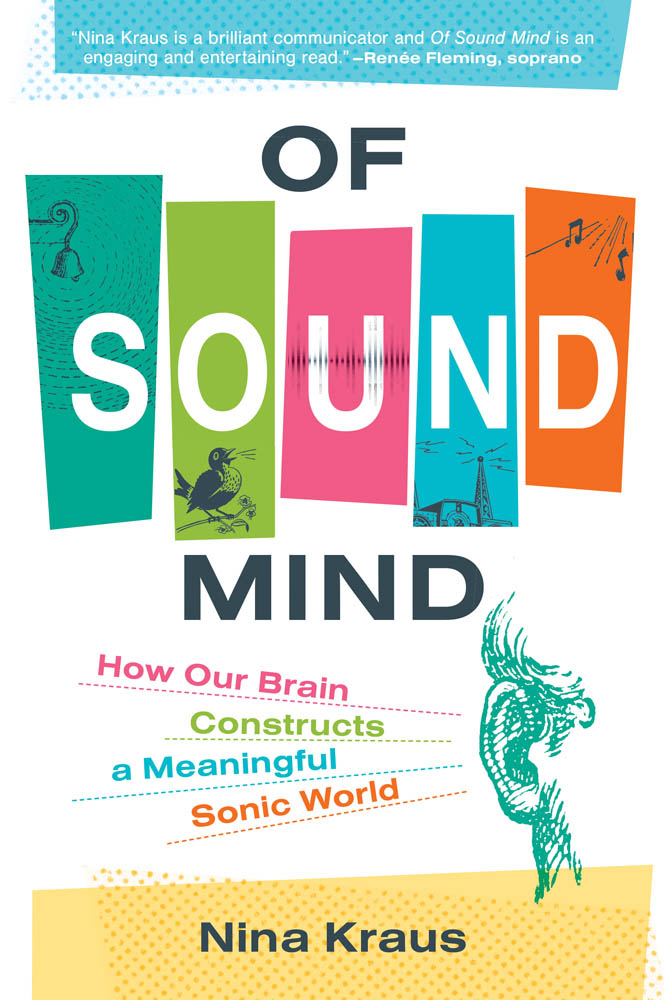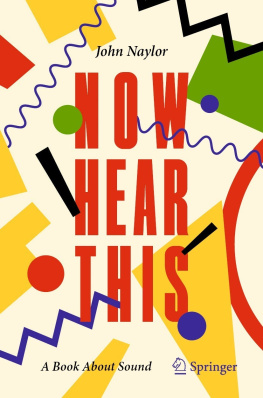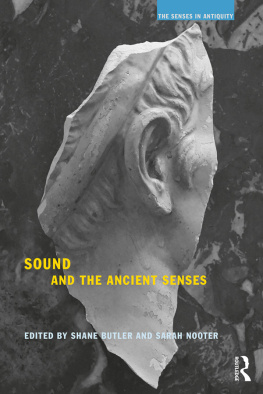Contents
Guide
Pagebreaks of the print version

Of Sound Mind
How Our Brain Constructs a Meaningful Sonic World
Nina Kraus
The MIT Press
Cambridge, Massachusetts|London, England
2021 Nina Kraus
All rights reserved. No part of this book may be reproduced in any form by any electronic or mechanical means (including photocopying, recording, or information storage and retrieval) without permission in writing from the publisher.
The MIT Press would like to thank the anonymous peer reviewers who provided comments on drafts of this book. The generous work of academic experts is essential for establishing the authority and quality of our publications. We acknowledge with gratitude the contributions of these otherwise uncredited readers.
Library of Congress Cataloging-in-Publication Data
Names: Kraus, Nina, 1952 author.
Title: Of sound mind : how our brain constructs a meaningful sonic world / Nina Kraus.
Description: Cambridge, Massachusetts : The MIT Press, [2021] | Includes bibliographical references and index.
Identifiers: LCCN 2020037100 | ISBN 9780262045865 (hardcover)
Subjects: LCSH: Hearing. | SoundPhysiological effect. | Brain.
Classification: LCC QP461 .K73 2021 | DDC 612.8/5dc23
LC record available at https://lccn.loc.gov/2020037100
d_r0
publication supported by a grant from
The Community Foundation for Greater New Haven
as part of the Urban Haven Project
To Mikey, Russell, Nick, and Marshall
Contents
List of Figures
Making sense of sound engages how we think, feel, sense, and move.
Sound processing in the brain is affected by the languages we speak, the music we make, and our brain health.
A plucked string moves the air molecules around it.
The endless variety of sound arises from air movement and can be described by a handful of ingredients.
The gray waveform has more cycles (is at a higher frequency) than the black, and so would sound higher in pitch.
The black and gray waves have the same frequency. But the modulation rates are differentthat is, the sound is being turned on and off at a faster rate in the gray waveform and so would sound higher in pitch than the black. The faster modulation rate in femalesprovided by faster vibration of the vocal cordsproduces a higher voice pitch when the same words are spoken.
A spectrum of a tuning fork is a single vertical line at only one frequency, here 262 Hz, or middle C. An instrument playing a middle C will have a peak at 262 Hz plus several harmonics at multiples of 262 Hz. A middle C played by a trombone or a clarinet features different patterns of harmonics due to resonance characteristics of the instruments. The spectra help us see why the same middle C sounds different when played by different instruments. (Frequency on the x-axis; energy on the y.)
Top: spectrum of ee as in beet. Bottom: spectrum of oo as in boot. Both have the same fundamental frequency, but where the energy of the harmonics is concentrated differs. (Frequency on the x-axis; energy on the y.)
The full frequency ranges of musical instruments and voices. The fundamental frequency range is shown on the left. Harmonics are shown to the right.
Bill turns into pill by adding 1/20 second of silence just before the vocalization of the vowel begins. (Time on the x-axis; energy on the y.)
Spectrograms (depicting changes in frequency over time). Top: an upward, then downward sweep in frequency. Bottom: ba and ga. The frequencies of both bands of acoustic energy change over time until they stabilize at the vowel a.
The sound mind processes sound ingredients to get the most out of them.
The auditory pathway has bidirectional connections among its own structures and to brain areas responsible for sensing, thinking, feeling, and moving.
The auditory pathway through the brain corresponding to the block diagram on the left. Water-color rendition by Arnold Starr, MD, a pioneer at applying the brains response to sound to assess neurological health. Reproduced with permission; photo by Tom Lamb.
Top: the cochlea, coiled and uncoiled. The base of the snail-shaped cochlea, where the stapes meets the oval window, is tuned to high-frequency sounds. The apex, the center of the coil, prefers low frequencies. The unrolled cochlea on the right depicts this schematically with a keyboard and also includes a cross-section showing the organ of Corti within. Bottom: the organ of Corti. Here we can see one inner and three outer hair cells (sandwiched between the tectorial and basilar membranes) and their connection to the auditory nerve. Reproduced with permission from Arnold Starr. Photo by Tom Lamb.
Cell types found in the cochlear nucleus. Adapted by permission from Springer Nature, The Mammalian Auditory Pathway: Neuroanatomy.
Signals from both ears converge in the superior olivary complex where their relative timings and intensities are analyzed. Reproduced with permission from Arnold Starr. Photo by Tom Lamb.
Mirror neurons respond similarly whether performing an action or watching the same action performed by another.
Sound processing changes in individual neurons when the sound has relevance.
Sensory maps are not unique to the auditory system. The exquisitely precise fundamental organization of our hearing system has analogues in vision, touch, and movement.
A bespectacled owl.
Neurons change with learning. Increasingly darker grays indicate increased neural firing. Prior to training (left plot), maximal activity is at a particular frequency, say 8,000 Hz. After the ferret learns a lower frequency of 6,000 Hz (wavy line) is important to listen to, the range of frequencies the neuron responds to expands to encompass the now-relevant frequency (right plot).
The sounds of our lives shape our sound minds.
Sound is delivered to the ear through earbuds. Scalp electrodes pick up the brains electrical response to sound. The brain wave resembles the sound wave. It tells us how well the brain processes different ingredients of sound. The mixing board illustrates that each sound ingredient is processed distinctly.
A microphone turns a sound wave into an electrical signal that can be played through a speaker. Likewise, listening to sound causes neurons to fire, creating electricity in the brain, which in turn can be played through a speaker. Sure enough, when sonified, the frequency following response sounds pretty much like the sound that evoked it, albeit a bit muffled.
Science and art, circa 1997. My sons middle-school rendition of what mommy does.
Influences exerted by learning create an auditory system that is flexible. Rapid changes in sound processing to satisfy an in-the-moment demand originate in efferent (dark) pathways and eventually effect permanent change to afferent auditory pathways (light), resulting in a new default state. This is how sound memories are stored.
Music is the jackpot of sensory, cognitive, motor, and reward engagement through sound.
Making music strengthens sound processing in the brain. The musicians edge builds over a lifetime.
The musicians auditory brain responds exceptionally well to the sound of their own instrument.
Auditory processing of an emotional sound. The nonmusician brain is focused on the fundamental frequency; the musician brain emphasizes the harmonic content.











